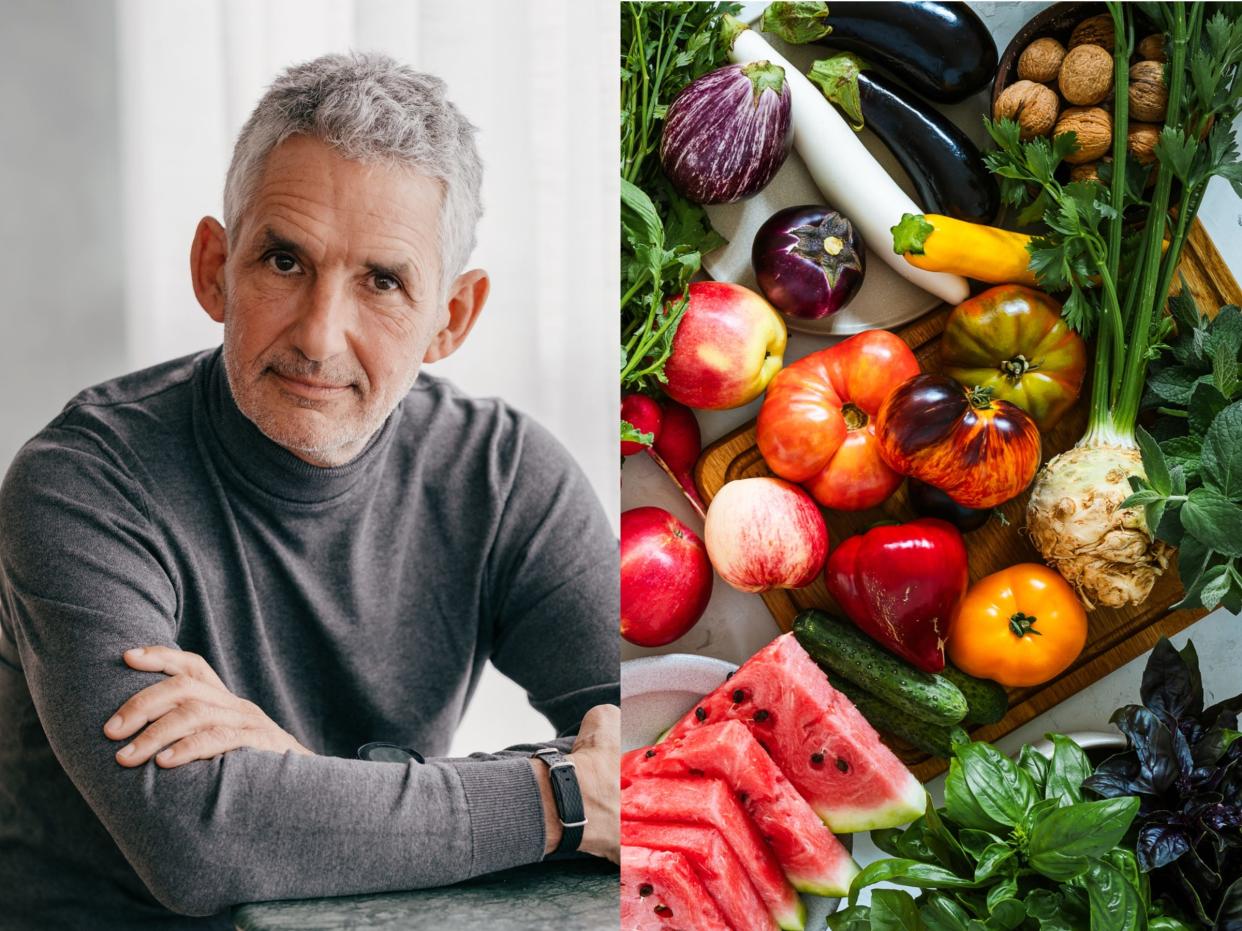Insider
A top nutrition scientist had a stroke at 53. He did 2 things to lower his blood pressure — and cutting out salt wasn’t one of them.
Serafina Kenny – October 9, 2024

- The nutrition scientist Tim Spector had a stroke in 2012 and learned he had high blood pressure.
- He made dietary changes to lower his blood pressure, which he shared with Business Insider.
- Unusually, these changes didn’t include reducing his salt intake.
Just as he was about to ski down a mountain in 2012, Tim Spector started seeing double. The epidemiologist and nutrition scientist made it down safely, but he later discovered he’d had a mini-stroke.
Spector was 53 at the time — considerably younger than 74, the average age that people in the UK, where he’s from, were found to have strokes in a 2021 study published in the journal Stroke.
While strokes are seen as a condition affecting mostly older people, more younger people are having them. The prevalence of strokes in adults ages 18 to 44 increased by 14.6% from the years of 2011 to 2013 to the years of 2020 to 2022, according to data from the Centers for Disease Control and Prevention.
After the stroke, Spector, who’s also the cofounder of the science and nutrition company Zoe, was diagnosed with high blood pressure. This is common after a stroke because most people who have one also have high blood pressure, according to the American Heart Association.
Spector shared with Business Insider the two things he did to lower his blood pressure after his stroke.
Spector added a salt alternative to his diet
Patients with high blood pressure are commonly told to reduce the amount of salt they eat. This is partly because salt increases the amount of water the body retains, which in turn increases the pressure in the blood vessels.
But Spector said he struggled with eating “tasteless food” when he cut out salt. And it didn’t seem to have any impact on his blood pressure because Spector is “salt-resistant.” That means eating salt doesn’t hugely affect his blood pressure.
Instead, he ate more potassium, which the World Health Organization recommends to reduce high blood pressure, by using a salt alternative made from potassium.
Because levels of sodium and potassium in the body affect each other, the more potassium you eat, the more sodium is lost though the urine, according to the AHA. Potassium can also help the walls of blood vessels relax, easing the pressure inside.
He ate more fruits and vegetables
Spector was already eating a minimal amount of ultra-processed foods, which is also something stroke patients are typically advised to do. So to further improve his diet, he added healthy foods — fruit and vegetables, to be exact.
Eating more fruits and vegetables was linked to a lower risk of high blood pressure in a 2023 review of studies published in the European Journal of Nutrition. Researchers suggested this could be because they contain lots of potassium or because eating plenty of fruit and vegetables is also associated with a lower risk of obesity, which is a risk factor for high blood pressure.
Researchers still aren’t sure which foods are best for lowering blood pressure, but the British Heart Foundation recommends fruits and vegetables that are high in nitrates, such as beetroot, spinach, kale, strawberries, and bananas.
The AHA recommends following the DASH diet, which stands for Dietary Approaches to Stop Hypertension, to reduce the risk of stroke. The DASH diet emphasizes fruits, vegetables, low-fat dairy, whole grains, poultry and fish, and nuts, and is low in fat, sugary beverages, red meat, and sweets.
BI previously reported on how to start the DASH diet.














